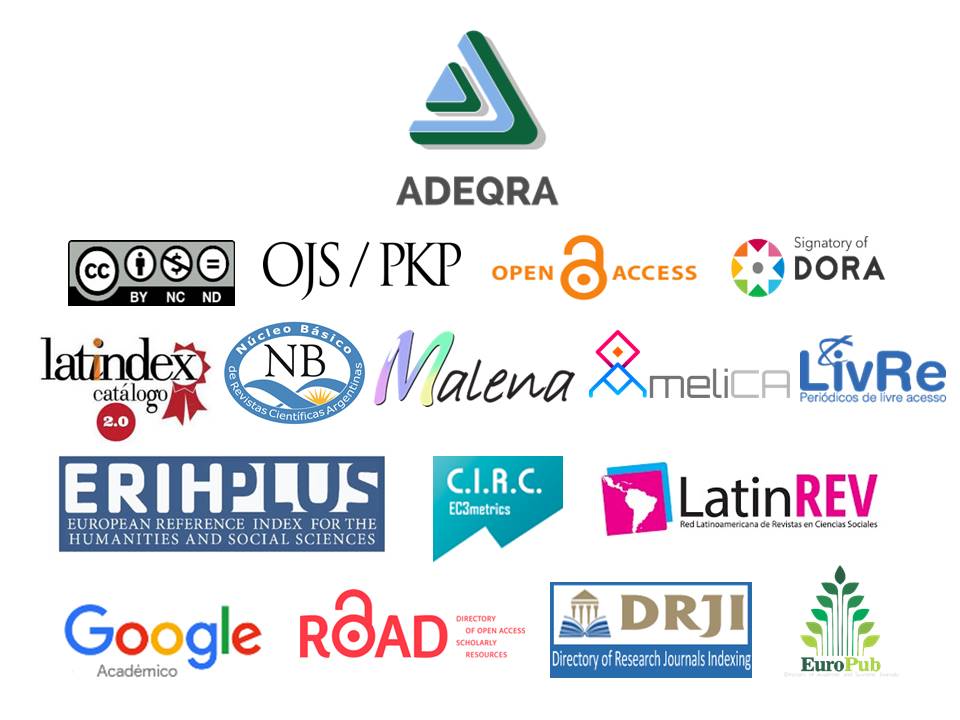Simulations to complement the kinetics study in basical level
Keywords:
simulations, general chemistry, chemical kineticsAbstract
Chemical kinetics is part of the curricula of most general chemistry courses that are taught in universities. Their study presents difficulties for beginners as shown in many publications of authors who have worked on the issue. In this paper the utility of simulations to partially overcome these difficulties in the teaching-learning process are discussed and various simulation programs on the subject, developed by the author are presented. Programs can be used as complementary laboratory classes activities, problems and theory, thus contributing to the integration of these. The programs have been used by the author in training courses for teachers and students of faculty, receiving favorable reception. A copy of the installable of some programs, with their guides for the student, are available to interested readers without charge.
References
Akerlof, G, (1927). Decomposition of Diacetone Alcohol Alkali Hydroxide Solutions, Journal of American Chemical Society, 49(12), 2955-2981
Baggio, S. (2018). Líquidos y soluciones: complementos informáticos para un curso de química general. Educación en la Química, 24(2), 137-154.
Baggio, S. (2020). Simulaciones computacionales como estrategia para la enseñanza de la química, Taller de 24 hs en la Universidad Austral de Chile. Valdivia, Chile, 2018; El Rol de los juegos en el aprendizaje de la química: Uso de herramientas informáticas para su implementación, REQ XVIII, Universidad Nacional del Rio IV, Rio IV, Córdoba, Agosto 2018; Las Simulaciones como un Elemento Integrador en Cursos de Química Básica Taller de 20 hs reloj, Universidad Nacional de la Patagonia Austral Río Gallegos, Santa Cruz, Octubre 2019; Las Simulaciones como un Elemento Integrador en Cursos de Química Básica: Conferencia Virtual, Universidad Nacional de Costa Rica, Heredia, Costa Rica, Marzo 2020.
Baggio, S. (2011). Programa Aj_Pol_n. Resultados no publicados.
Baggio, S. (2012). Una guía digital de problemas para un curso de química general. Educación en la Química, 18(2),103-110.
Bender, G., Cutrera, G., y Defago, A. (2007). Cinética química y analogías: un análisis de las propuestas de enseñanza. I Jornadas de Enseñanza e Investigación Educativa en el campo de las Ciencias Exactas y Naturales, La Plata 18-19 de octubre de 2007.
Birk, J. B. (1976), Coffee Cup Kinetics, Journal Chemical Education, 53,3, 195-196.
Blickensderfer, R. (1990). Learning Chemical Kinetics with Spreadsheets. Journal of Computers in Mathematics and Science Teaching, 9,4, 35-43.
Bykov, V.I., Elokhin, V.I., Gorban, A.N., & Yablonskii, G.S. (1991). Kinetics models of catalytic reactions. En R.E. Compton (Ed.), Comprehensive chemical kinetics (pp. 47-81). Amsterdam: Elsevier.
Casado, J., López-Quintela, M.A., & Lorenzo-Barral, F.M. (1986). The initial rate method in chemical kinetics. Journal Chemical Education, 63, 450-451.
Chang, R. (2010). Química, McGraw-Hill.
Corsaro, G. (1964). A Colorimetric Chemical Kinetics Experiment. Journal Chemical Education, 41,1,48-50.
Cortés-Figueroa, J. E., Pérez, W. I., López, J. R. y Moore-Russo, D.A. (2011). An Analogy Using Pennies and Dimes to Explain Chemical Kinetics Concepts, Journal of Chemical Education, 88(7), 932-936.
Davenport, D. A. (1975), Capillary Flow, Journal Chemical Education, 52(6), 379-381.
Dean, J. A. (1985). Lange’s Handbook of Chemistry. Nueva York: McGraw Book Co.
Escamilla, J. (2000). Selección y uso de tecnología educativa. México: Trillas.
Findlay, A. (1955). Prácticas de Físicoquimica. Buenos Aires: Editorial Médico-Quirúrgica.
Frost, A. A. y Pearson, R. G. (1965). Kinetics and Mechanism. Nueva York: John Wiley & Sons.
Hinshelwood, C. N. y Burk, R. E. (1924). The homogeneous thermal decomposition of nitrous oxide. Royal Society of London, 106, 284-291.
King, E. L. (1964). How Chemical Reactions Occur. Nueva York: W. A. Benjamin.
Kurt, S. y Ayas, A. (2012). Improving students’ understanding and explaining real life problems on concepts of reaction rate by using a four step constructivist approach, Turkey, Energy Education Science and Technology Part B: Social and Educational Studies, 4(2), 979-992.
Laidler, K. J. (1988). Rate-controlling step: A necessary or useful concept? Journal Chemical Education, 65, 250-254.
Laidler, K. J. (1987). Chemical kinetics. Nueva York: Harper & Row.
Paredes, J. y Molina, M. (2019). Enseñanza de la cinética química por medio de simulaciones y aprendizaje activo. Tecné, Episteme y Didaxis, 45, 71-88.
Shurvell, H. F. (1967). The kinetics of an ionic reaction, Journal Chemical Education, 44(10), 577-578.
Smith, D. F. (1925). The rate of thermal decomposition of sulfuryl chloride. a first-order homogeneous gas reaction. Journal of American Chemical Society, 47(7), 1862–1875.
Useda, P. L. y Castañeda, M. A. G. (2015). El ambiente digital en la comunicación, la actitud y las estrategias pedagógicas utilizadas por docentes. Tecné, Episteme y Didaxis, 37, 109-129.
Washburn, E. W. (2003). International Critical Tables. Knovel.
Published
How to Cite
Issue
Section
License
Copyright (c) 2021 Sergio Baggio

This work is licensed under a Creative Commons Attribution-NonCommercial-NoDerivatives 4.0 International License.



